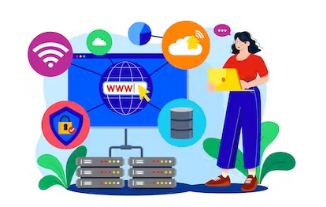Managed IT services refer to the practice of outsourcing the responsibility for managing, monitoring, and supporting an organization’s IT systems and infrastructure to a third-party provider. Instead of handling IT tasks internally, businesses can rely on a managed service provider (MSP) to take care of their technology needs.
Under a managed IT services model, the MSP assumes responsibility for various IT functions based on a service level agreement (SLA) which outlines the agreed-upon services, response times, and terms of the partnership. The specific services provided can vary depending on the needs and goals of the organization, but common offerings include:
- Network monitoring and management: MSPs monitor and maintain the organization’s network infrastructure, ensuring it operates optimally and addressing any potential issues proactively.
- Help desk and technical support: Managed IT services typically include a help desk function to provide prompt assistance and support to end-users, resolving their IT-related issues and answering their queries.
- System security and data protection: MSPs implement security measures to safeguard the organization’s infrastructure, networks, and data from cyber threats. This includes tasks like firewall management, antivirus software deployment, and data backup and recovery.
- Infrastructure and hardware management: MSPs oversee the organization’s hardware infrastructure, including servers, workstations, and other devices. They handle tasks such as maintenance, upgrades, and replacement of equipment as needed.
- Software and application management: Managed IT services often include software and application support, including installation, updates, and troubleshooting. This can encompass productivity tools, email systems, and other mission-critical software.
- IT consulting and strategic planning: MSPs can offer guidance on technology decision-making, helping businesses develop IT strategies, assess their technology needs, and plan for future growth.
The benefits of using managed IT services include:
- Reduced IT costs: Outsourcing IT functions can be more cost-effective than hiring and managing an in-house IT team. It allows organizations to leverage the expertise of the MSP without the expense of full-time staff.
- Focus on core business: By offloading IT responsibilities to a trusted partner, organizations can concentrate their resources and efforts on their core business activities without getting distracted by day-to-day technology management.
- Access to expertise: MSPs bring specialized knowledge and experience across various IT disciplines. They stay up-to-date with the latest technology trends, security threats, and best practices and can provide organizations with valuable insights and guidance.
- Scalability and flexibility: Managed IT services offer scalability to accommodate changing business needs. Organizations can easily scale up or down their IT services as required.
- Proactive IT management: MSPs monitor IT systems continuously, detecting and resolving issues before they impact the business. This proactive management helps minimize downtime and optimize system performance.
Overall, managed IT services allow organizations to leverage external expertise, gain cost efficiencies, and focus on their core objectives while ensuring their IT infrastructure is well-managed, secure, and aligned with their business goals.
